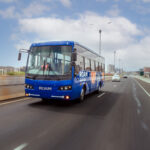Japan Mobility Show: A journey of discovery
Japan Mobility Show: A journey of discovery
The Tokyo Motor Show is now called the Japan Mobility Show, and this year’s theme was “Discover a future you can’t wait to navigate”. CHARLEEN CLARKE joined the 1.1 million visitors who poured through the gate to make that discovery.
The 2023 Japan Mobility Show was fascinating – not least because it was the first time in the history of the two companies that Isuzu and UD Trucks shared a joint stand. This follows Isuzu’s acquisition of UD Trucks from the Volvo Group in 2021.
In keeping with the collaboration between the two companies, the leaders of both truck makers shared the stage during the Isuzu Group’s press conference. Isuzu president Shinsuke Minami and UD president Kouji Maruyama explained that the booth was divided into three sections: innovation for earth, innovation for society, and innovation for life.
“Innovation goes beyond the vehicle itself and focuses on people and goods. It’s about creating products and services that optimise the movement of people and goods,” explained Minami. “Now is the time to create a better life through better transport. We can clearly see the challenges that society must overcome,” he added. “For example, we have to move towards carbon neutrality to mitigate climate change, reduce traffic accidents to zero, and address 2024 work reform legislation that will limit working hours and ultimately exacerbate labour shortages in Japan. We view these challenges as an opportunity for innovation and we continually seek solutions that will make a difference.”
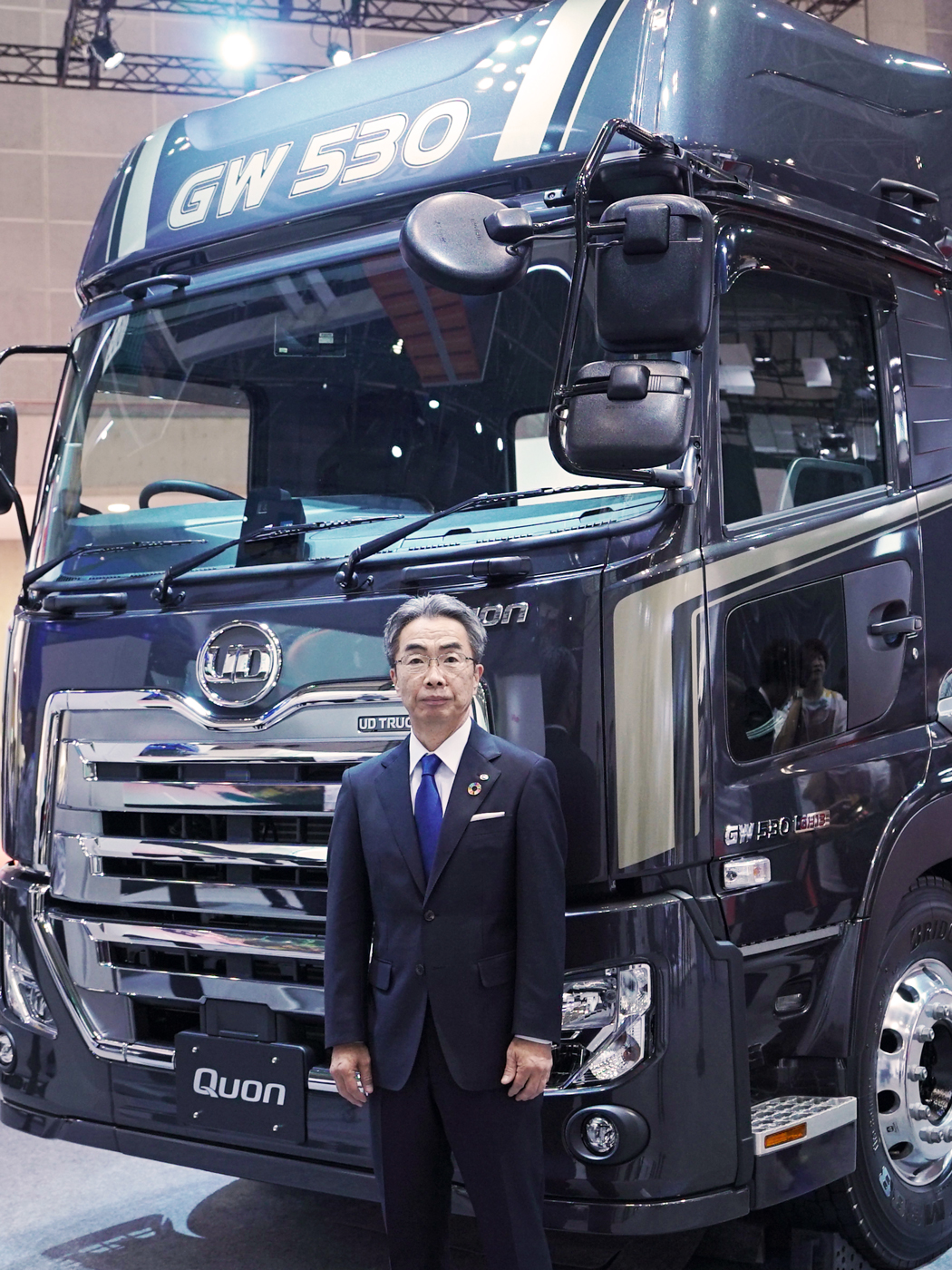
Innovation for life
Minami explained that innovation for life is about the free movement of people and goods anytime, anywhere, and in a more human-centric and convenient fashion. “We believe that the fluid movement of people and goods will make tomorrow’s life richer and more exciting. Today we will unveil a product and solution that gives form to these ideas,” he noted. That product was the Erga Electric Vehicle (EV): a battery-electric bus. “This EV bus is the first among Japanese manufacturers to achieve a fully flat floor. Furthermore, it offers the low vibration and noise that only EVs can provide. People can move comfortably and freely inside the bus,” said Minami. The Erga’s launch is scheduled for the next fiscal year.
Battery swapping to the fore
Minami also revealed a concept that was seen on the Fuso stand too (more about that later): battery swapping, which in Isuzu’s case was called the EVision Cycle Concept. This is a super useful concept because as we all know, downtime during charging is a major drawback with EVs. Accordingly, the EVision Cycle Concept can quickly replace depleted batteries with charged ones, greatly reducing downtime.
Minami was very enthusiastic about the concept’s potential. “The ability to separate the vehicle from the battery and charge it at optimal times results in operational efficiency and cost savings for the vehicle operator. Moreover, it also helps reduce the load on the power grid,” he emphasised. “In addition, the battery can be shared by multiple vehicles. The flexible increase and decrease of battery capacity according to different applications is a good way to maximise the use of a small amount of battery power. This also allows for the maximum utilisation of batteries.”
He went on to explain that battery swapping stations can also play the role of battery storage facilities, noting: “If the station can be combined with solar power generation, it can become a storage base for renewable energy.” It certainly makes a great deal of common sense, so we were not surprised to hear the Isuzu president promise many more projects like the EVision Cycle Concept.
Fuso promoted something very similar on its stand, and is collaborating on a battery-swapping project with a company called Ample. The batteries are exchanged at Ample battery swapping stations, a process that is eventually targeted to take a mere five minutes, while a test vehicle trial on public roads is scheduled for the end of this year in Japan.
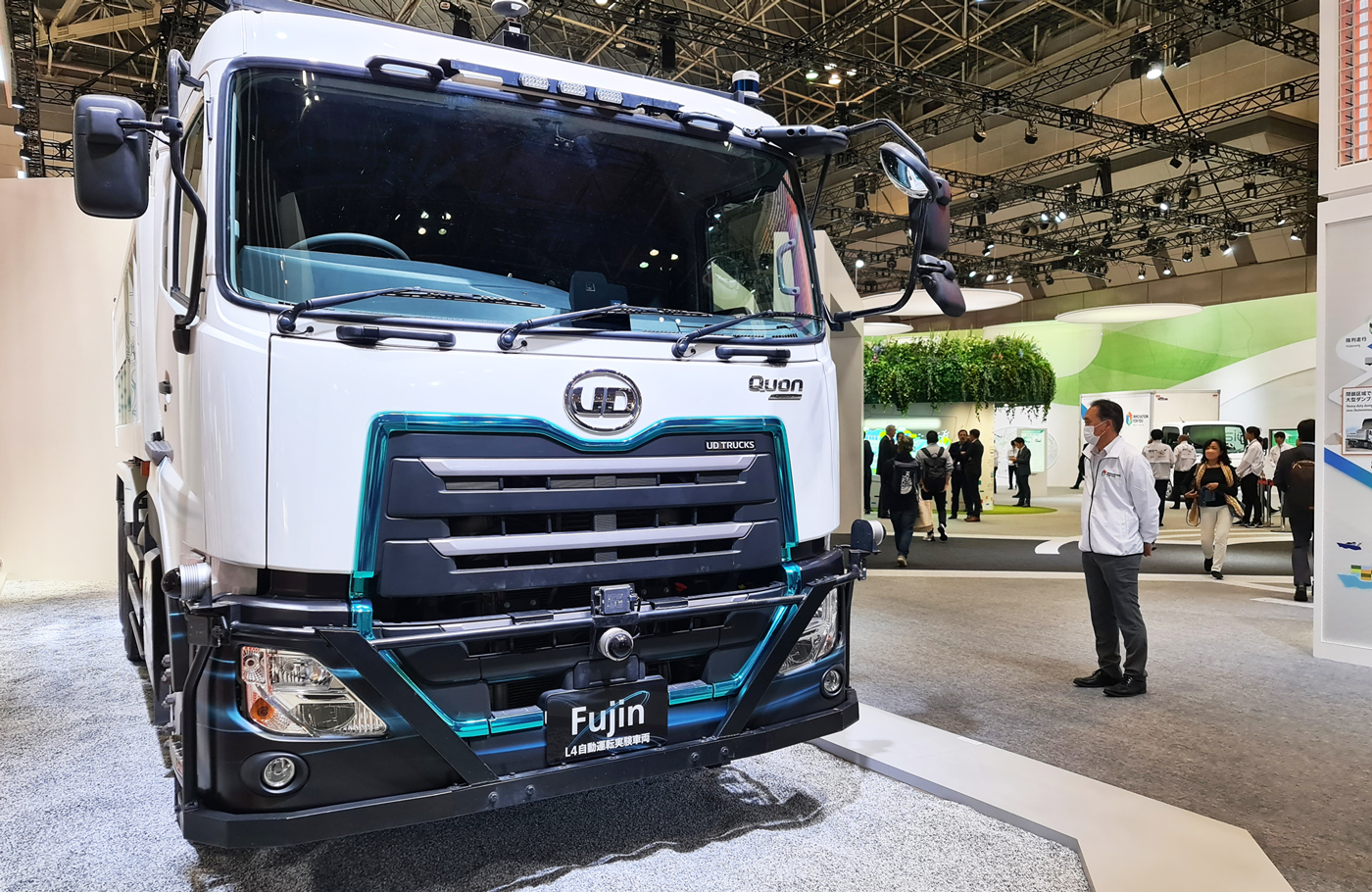
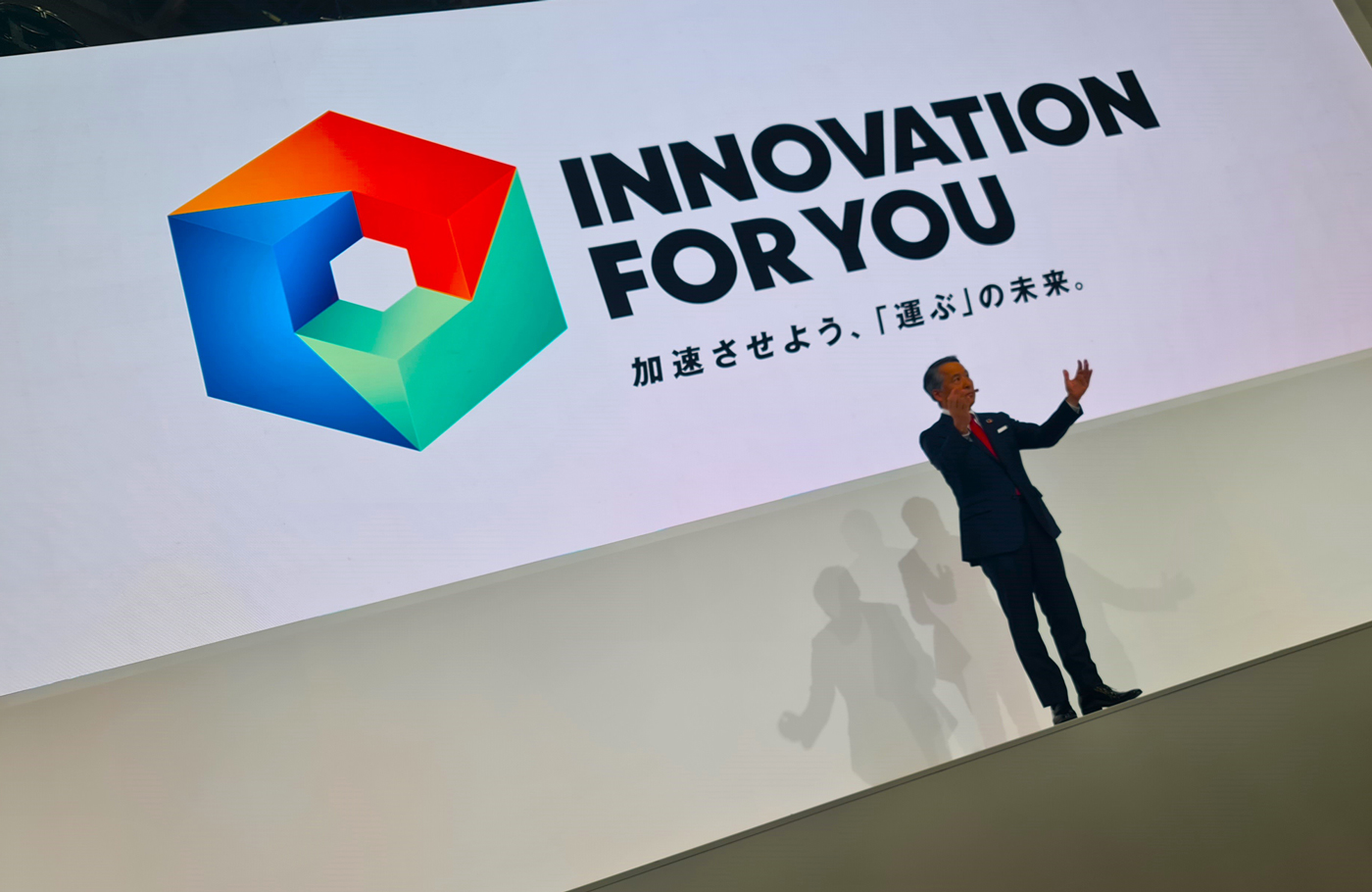
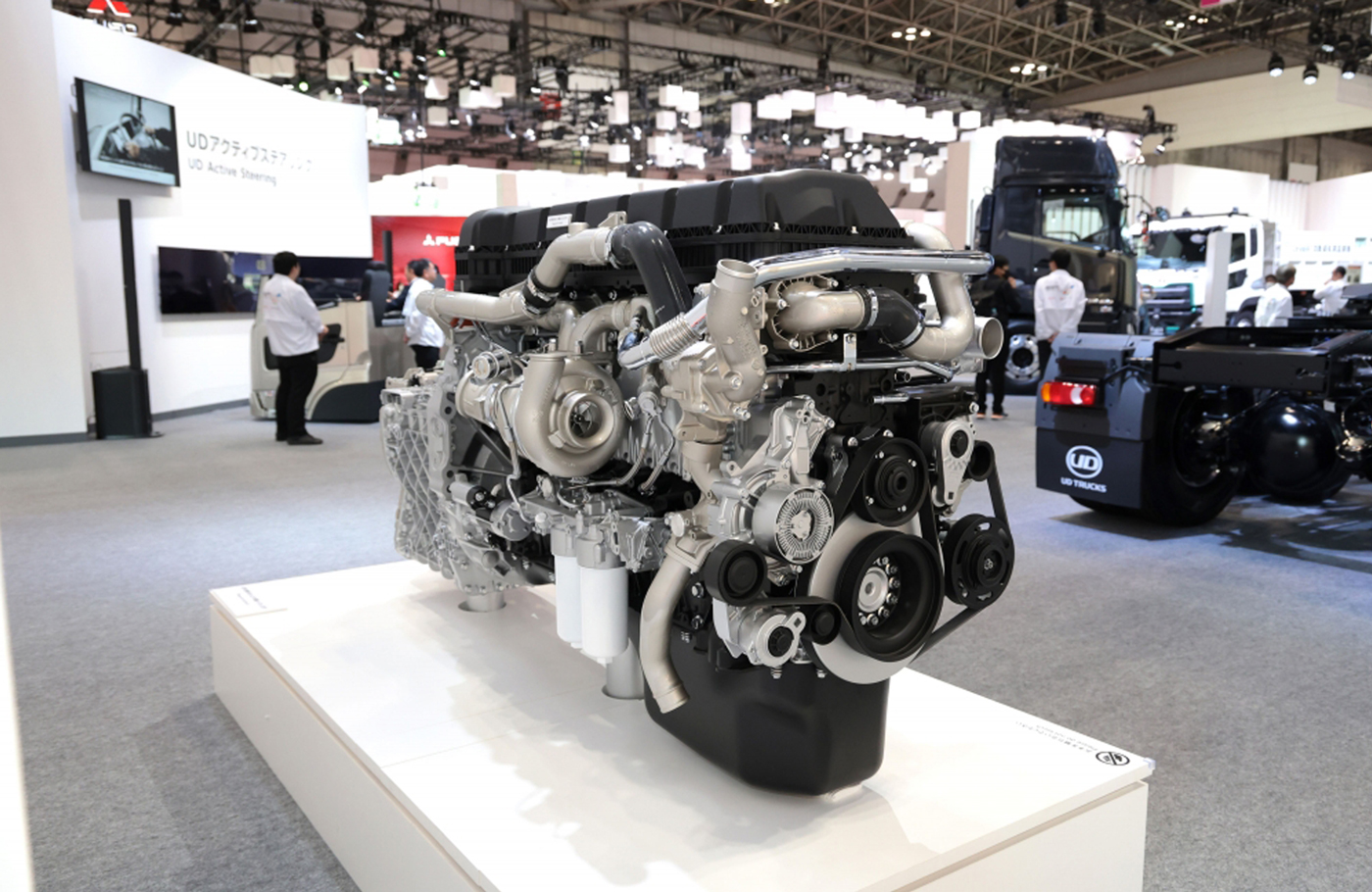

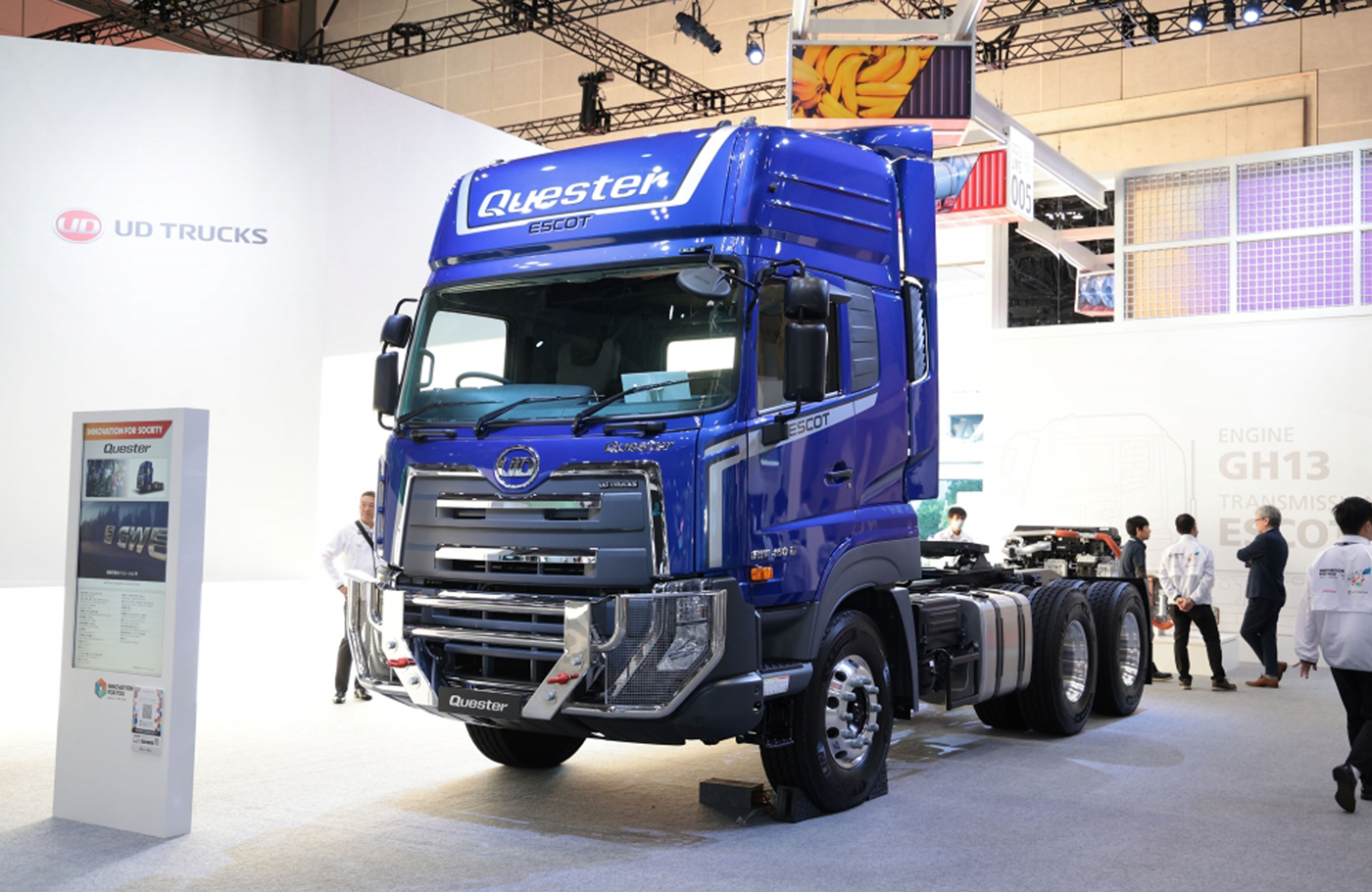
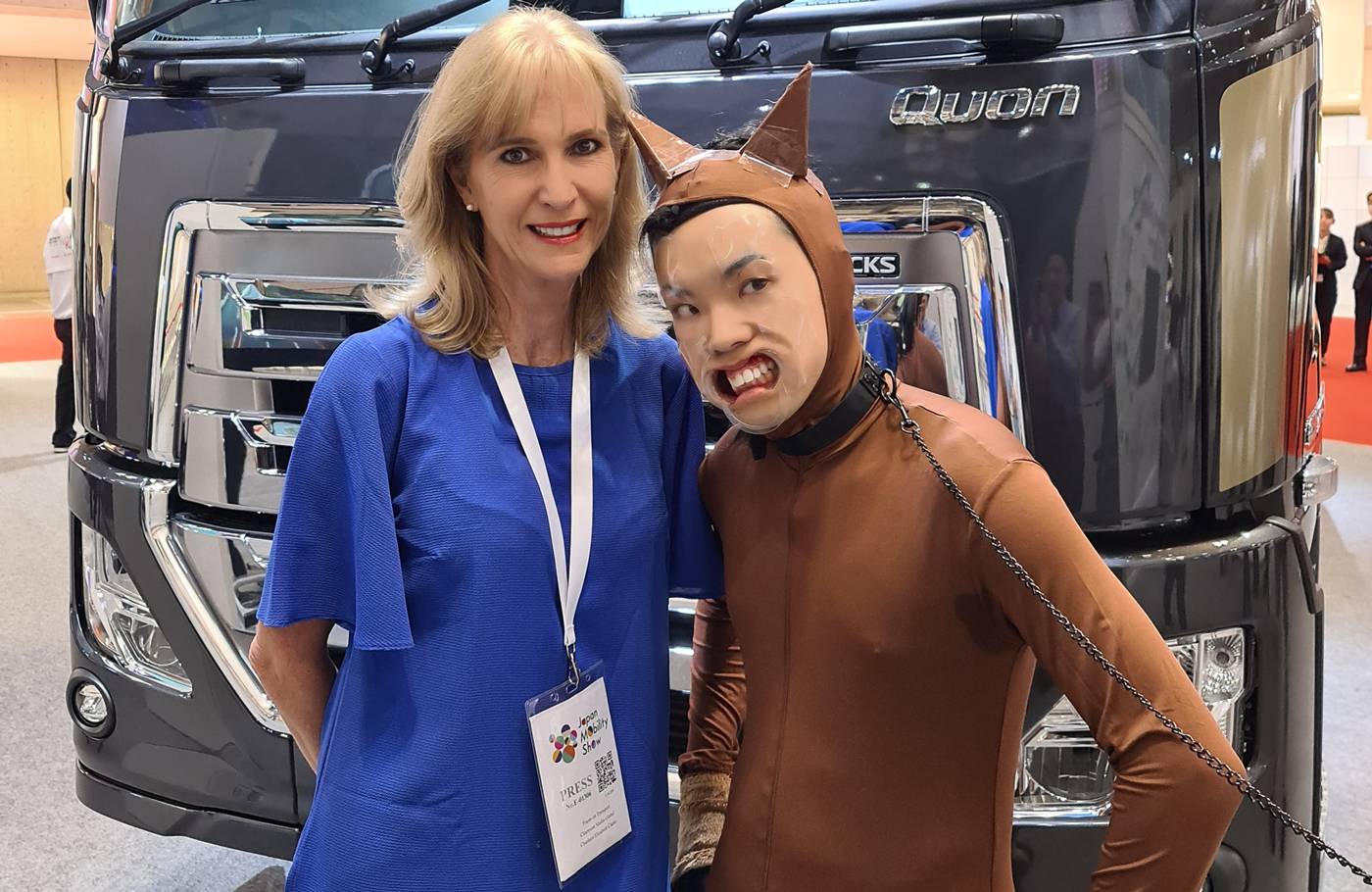

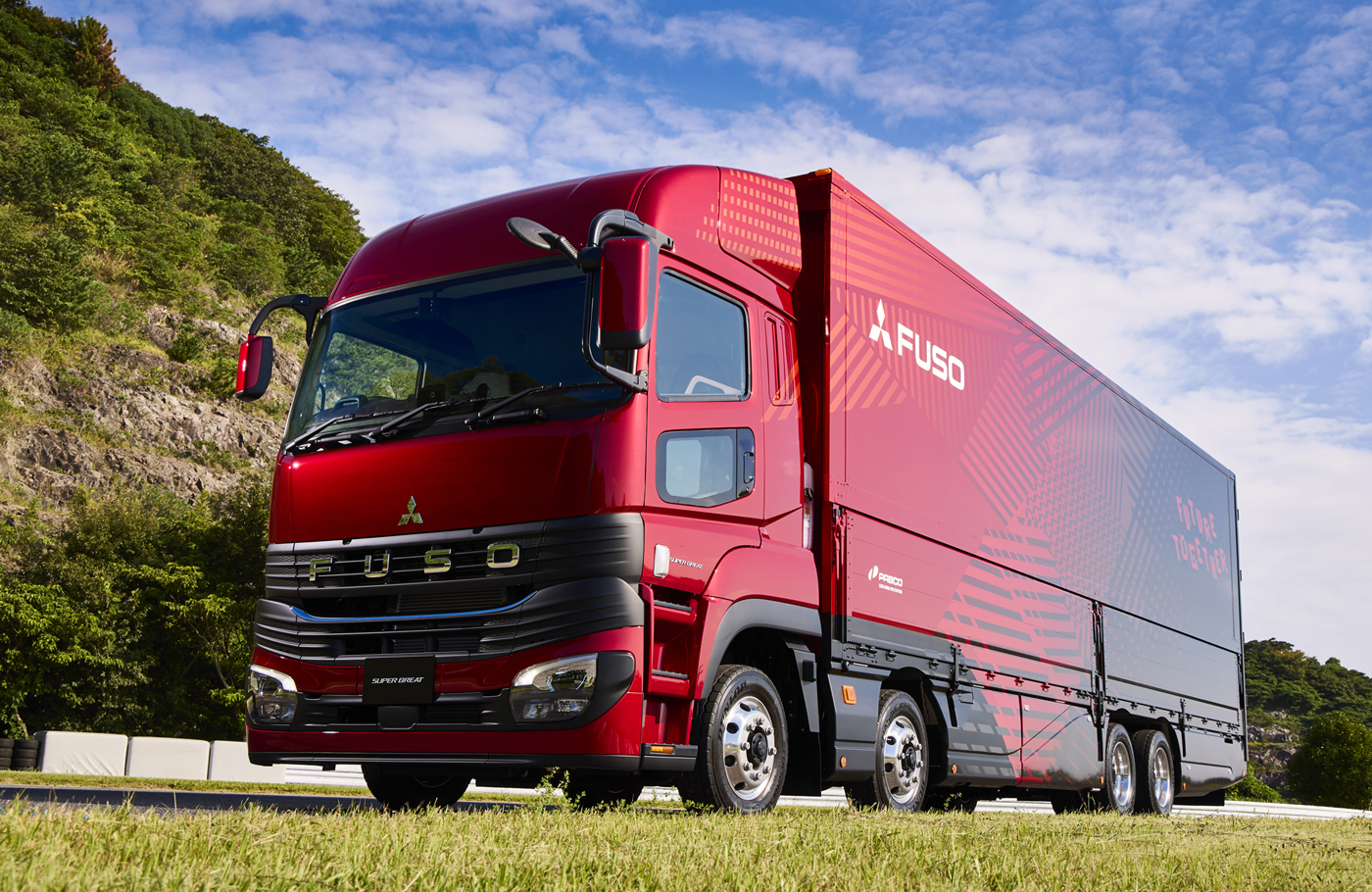
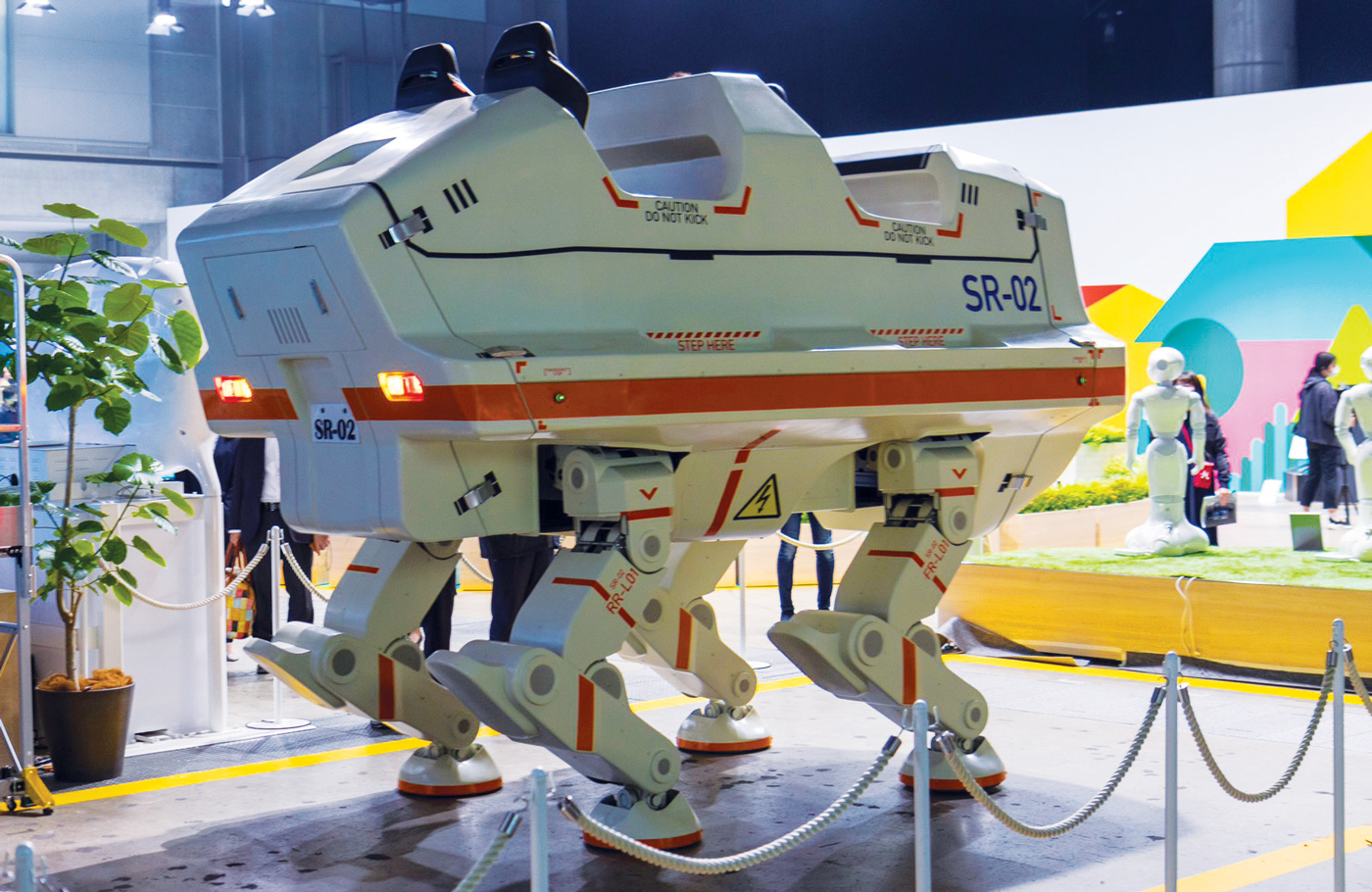
Innovation for earth
Innovation for earth was provided by the ELF EV, Isuzu’s first mass-produced battery EV truck. “It shares the platform with diesel vehicles, which allows for a wide variety of configurations and applications. We believe that this is a very important advantage,” said Minami.
The ELF EV will be launched in the North American market next year and thereafter will be rolled out to customers all over the world (hopefully including South Africa).
Isuzu, Honda, and UD join forces
Yet another innovation for earth was the GIGA, a heavy-duty fuel cell truck being developed in collaboration with Honda and UD Trucks. It was being displayed to the public for the very first time.
The GIGA Fuel Cell is an 8×4 rigid truck, which is a typical truck configuration for intercity transportation in Asia. It has a range of more than 800km and is equipped with an external power output function, so it can serve as a mobile power station if required… we could do with some of those in South Africa!

“Heavy-duty trucks are required to carry heavy loads over long distances and for long periods of time. We believe that a fuel cell with zero CO2 emissions would be an effective solution in addressing this challenge,” said Minami.
When the agreement for the joint project was concluded back in January 2020, UD Trucks was owned by Volvo, so obviously wasn’t part of the picture. However, UD is very much involved now, as its senior executives told us at the show.
The three companies are planning to start demonstration testing of a prototype model on public roads before the end of the current fiscal year (31 March 2024). Accordingly, they have brought together their respective technologies and knowledge to develop this large-scale fuel cell vehicle with the aim of bringing it to market by 2027. “The GIGA fuel cell truck is a low noise, low vibration vehicle that is unique to fuel cell vehicles, and it will deliver environmentally sustainable transport in the hydrogen-based society of tomorrow,” Minami promised.
Hino also exhibited a fuel cell truck called the Hino Profia Z FCV Prototype, which was developed by Toyota Motor and Hino and has a target mileage of “about 600km”. The prototype incorporates a Toyota Fuel Cell system, with an alternating current (AC) synchronous motor, large capacity high-pressure hydrogen tanks, and a lithium-ion battery.
Innovation for society
UD’s Maruyama highlighted a number of challenges to be addressed in Japan’s transport industry. These include the long working hours of truck drivers, an increase in deliveries due to the rapid expansion of e-commerce, and the impending 2024 work reform legislation.
The legislation to which he alludes pertains to working hours for truck drivers: in April next year, the Japanese government intends to introduce an overtime cap limiting them to 960 hours a year.
The Japan Times reports that the potential negative impacts of the new rule have been dubbed the “2024 problem” – a series of predicted logistical issues such as potential disruption to delivery services and a decrease in delivery capacity, amid a simultaneous inability to attract young, new workers into the trucking industry.
“Truck drivers in Japan traditionally work long hours for low pay. Labor ministry data from 2022 shows that the average annual working hours for a heavy truck driver were 2,568, which is 444 hours longer than the national average for all jobs. The average annual income was around 4% lower than the all-industry average, coming in at ¥4.77 million,” it reports. That is roughly R674,100.
“With the coming overtime cap, the transportation capacity of commercial trucks is predicted to face a reduction of around 14% by 2024, according to the trade ministry’s sustainable logistics study group. And the Nomura Research Institute estimates that truck drivers could transport 35% less cargo in 2030 compared to 2015,” the Japan Times cautions. It adds that groups like the Japan Trucking Association (JTA) have warned that the cap could cause changes to services that have become convenient norms for consumers (deliveries of fresh seafood, fruits and vegetables, or same- and next-day deliveries, for instance).
Isuzu and UD Trucks are very mindful of these potential problems. “Therefore, in order to encourage more people to enter the logistics industry and thrive, the Isuzu Group is promoting various initiatives so that drivers will find it a rewarding profession,” said Maruyama.
One such “initiative” (if you can call it that) is the Quon GW 6×4, which was displayed on the stand. It boasts the next-generation 12-speed electronically controlled ESCOT-VII automatic transmission and UD Active Steering for precise and stable steering. Superior braking power is provided by disc brakes, which are unique among Japanese truck manufacturers.
“This is the first heavy-duty tractor jointly developed by Isuzu and UD Trucks,” Maruyama elaborated. “Powerful yet fuel efficient, it is our flagship model that redefines the standard for hauling heavy goods. It is easy to drive and puts both people and cargo first. It is truly a vehicle that drivers can take pride in as they play their own role in keeping society moving.”
The Quester GWE 6×4 – equipped with the UD Selective Catalytic Reduction (SCR) system – also enjoyed pride of place on the stand. “This is a heavy-duty tractor for emerging markets. The Quester celebrated its 10th anniversary this year. It has a high environmental performance that complies with the Euro 5 emission legislations set by the EU. Currently, it has a proven track record in about 50 countries, helping support projects that contribute to the economic growth around the world,” noted Maruyama.
No heavy-duty licence? No problem!
The launch of the ELFmio on the stand was also mooted as a way to grow Japan’s pool of truck drivers. “This is a light-duty truck that can be driven with a standard Japanese driver’s license. It represents one of the ways that Isuzu is working to broaden the potential pool of drivers in response to chronic driver shortages in Japan brought on by an ageing workforce,” said Minami.
The ELFmio is said to boast the most comfortable cabin in its class, with an interior spacious even for tall drivers. It also has a small turning radius that promises great manoeuvrability. In fact, it is a truck that drives like a passenger car; it’s said to be easy to handle for any driver, regardless of experience or age.
No driver? No problem!
Yet another interesting exhibit was the “Fujin” test vehicle. UD Trucks and Kobe Steel have been conducting an autonomous driving trial at the latter’s Kakogawa Works, using a heavy-duty Quon equipped with Level 4
autonomous driving technology: it still needs a driver, but with the obvious end goal of driverless vehicles. “Autonomous driving technology will continue to evolve, ushering in a world where buses operate on specific routes and trucks run along pre-determined points within worksites. Fujin is a test vehicle that opens up a new world in which people and vehicles work together. It is but one example of the Isuzu Group’s autonomous driving initiatives. We believe that, through autonomous driving, people and technology can work together to create higher value-added jobs. We will continue to promote such efforts to help solve logistics challenges and realise a more prosperous society,” emphasised Maruyama.
Lots of other fun stuff
Naturally, there was lots of fun stuff at the show as well. We particularly liked Subaru’s flying car, powered by a five-rotor electric motor. Described as “halfway between a car and an eVTOL”, it looks a lot like a fidget spinner.
Then there was Suzuki’s intriguing mobility device named MOQBA, short for Modular Quad Based Architecture. It goes up stairs and comes in three modes: Chair, Standing, and Stretcher mode. “Through these modes, it contributes to the local society by not only providing the freedom of transportation, but also as a mobility that transports people and objects in places where cars can hardly go through, in case of situations such as emergencies,” a company spokesperson told us.
Also worth a second look was the SR-02 from Japanese company Sansei Technologies – a quadruped robot with the capacity to transport four people. It measures more than four metres high and five metres long and is a 100% electric vehicle, which can be piloted with a joystick or move autonomously at the user’s choice. When it goes down to allow you to climb onboard, think camel: it kind of sits on the ground, folding its legs. When you consider its speed, though, think tortoise: the SR-02 is slow. In fact, if they were to race, the tortoise would probably win… and handsomely at that.
Published by
Charleen Clarke
focusmagsa





